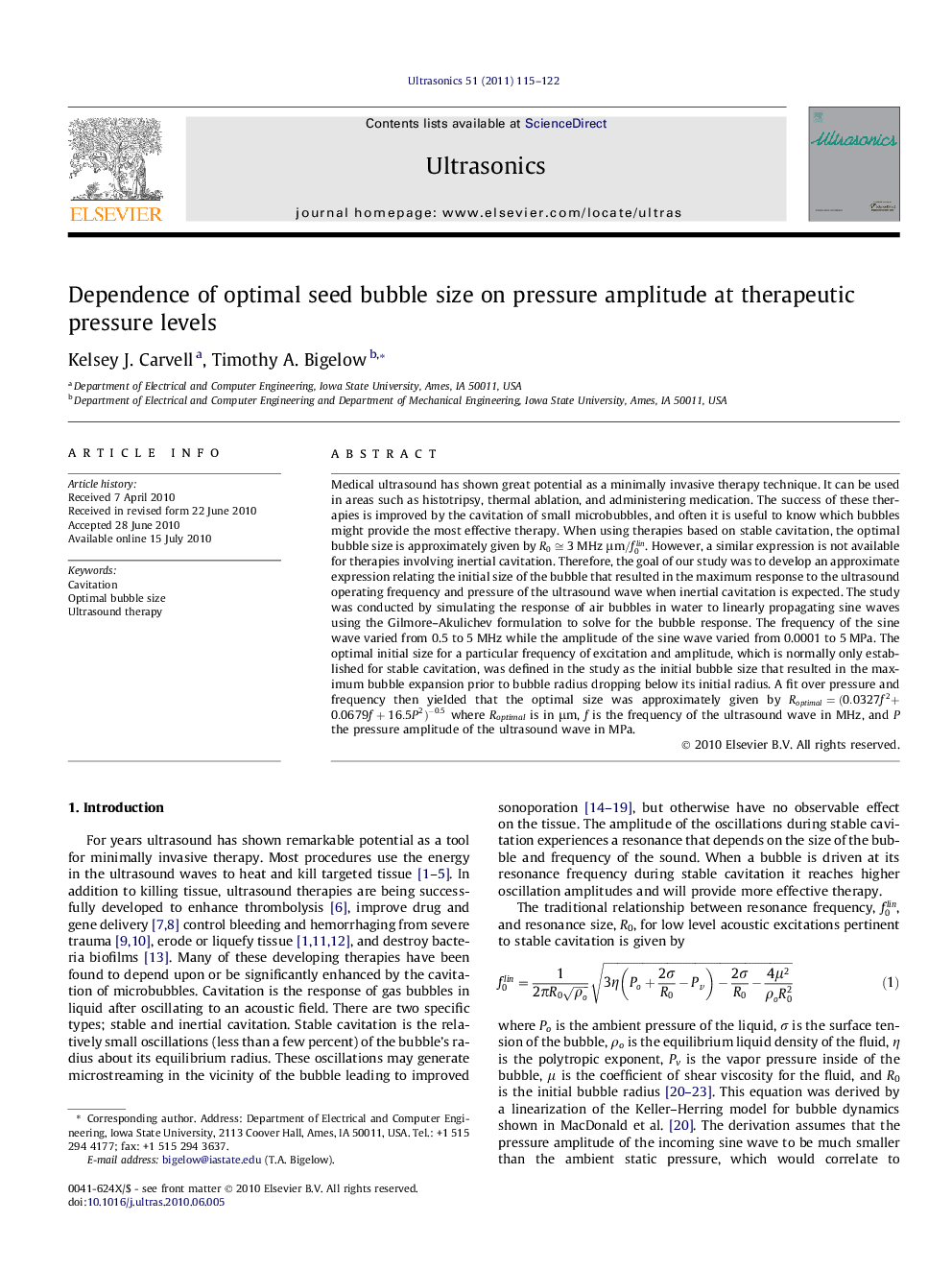| Article ID | Journal | Published Year | Pages | File Type |
|---|---|---|---|---|
| 1759456 | Ultrasonics | 2011 | 8 Pages |
Medical ultrasound has shown great potential as a minimally invasive therapy technique. It can be used in areas such as histotripsy, thermal ablation, and administering medication. The success of these therapies is improved by the cavitation of small microbubbles, and often it is useful to know which bubbles might provide the most effective therapy. When using therapies based on stable cavitation, the optimal bubble size is approximately given by R0≅3MHzμm/f0lin. However, a similar expression is not available for therapies involving inertial cavitation. Therefore, the goal of our study was to develop an approximate expression relating the initial size of the bubble that resulted in the maximum response to the ultrasound operating frequency and pressure of the ultrasound wave when inertial cavitation is expected. The study was conducted by simulating the response of air bubbles in water to linearly propagating sine waves using the Gilmore–Akulichev formulation to solve for the bubble response. The frequency of the sine wave varied from 0.5 to 5 MHz while the amplitude of the sine wave varied from 0.0001 to 5 MPa. The optimal initial size for a particular frequency of excitation and amplitude, which is normally only established for stable cavitation, was defined in the study as the initial bubble size that resulted in the maximum bubble expansion prior to bubble radius dropping below its initial radius. A fit over pressure and frequency then yielded that the optimal size was approximately given by Roptimal=(0.0327f2+0.0679f+16.5P2)-0.5Roptimal=(0.0327f2+0.0679f+16.5P2)-0.5 where Roptimal is in μm, f is the frequency of the ultrasound wave in MHz, and P the pressure amplitude of the ultrasound wave in MPa.
